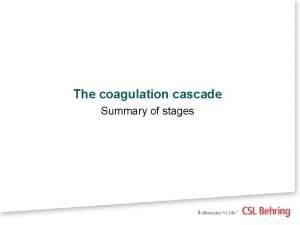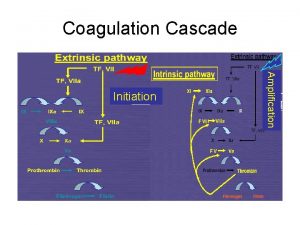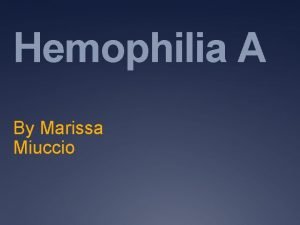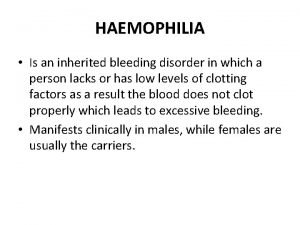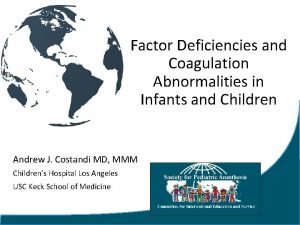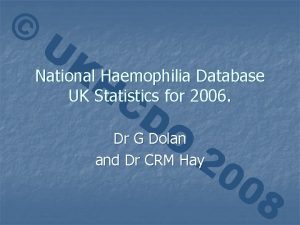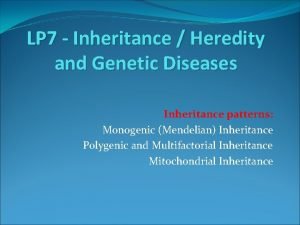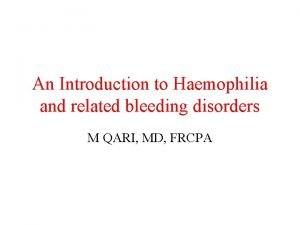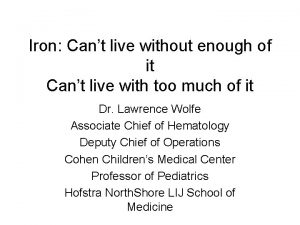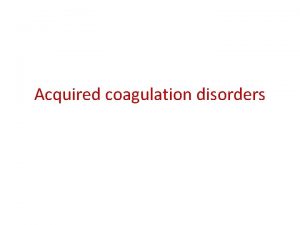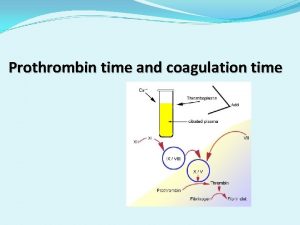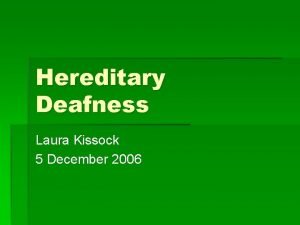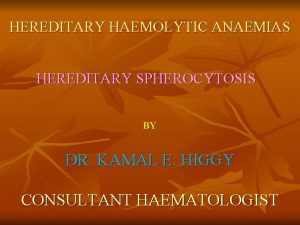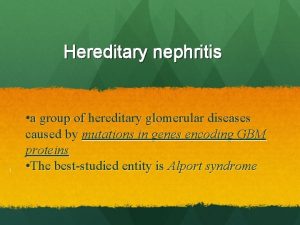Coagulation cascade Hereditary coagulation disorders Haemophilia A Is











- Slides: 11

Coagulation cascade:

Hereditary coagulation disorders Haemophilia A: Is most common hereditary disorder of blood coagulation. The inheritance is: sex linked, but 33% of patients have no family history & result from spontaneous mutation. The incidence: 30 -100/106 The defect is: absence or low level of plasma factor VIII. The gene for factor VIII is located near the tip of the long arm of the X chromosome (Xq 2. 8), the genetic defects include many deletions & different point mutations.

Clinical features: * Recurrent painful haemarthroses & muscle haematomas dominate the clinical course of severely affected patients with progressive deformity &crippling. *prolonged bleeding occurs after dental extractions. *Haematuria is more common than GIT bleeding. *The clinical severity of the disease is correlate with the extent of coagulation factor deficiency. *Spontaneous intracerebral haemorrhage is an important cause of death in severe disease.

Clinical features: *Haemophilic pseudotumours: may occur in the long bones, pelvis, fingers &toes. These result from repeated subperiosteal haemorrhages with bone destruction, new bone formation, expansion of bone pathological fractures. *many patients have subclinical liver disease & few have clinical features of chronic hepatitis This is largely due to many infusions of blood products & consequence transmission of hepatitis B or C & other non A non B hepatitis & HIV transmission

Factor IX deficiency (Christmas disease, Haemophilia B) The inheritance & clinical features of Factor IX deficiency are identical to those of haemophilia A. The two disorders are distinguished by specific coagulation factor assays. The incidence is 1/5 that of haemophilia A. The factor IX is coded by gene near to that of factor VIII (Xq 2. 6 region). The factor IX is 1/5 the size of haemophilia A, As in haemophilia A number of mutations & deletions have been found.

Von willenbrand's disease: The incidence: 30 -100/106 The inheritance: autosomal dominant with varying expression.

Pathogenesis: The primary defect appears to be reduced synthesis of VWF , this protein promotes platelet adhesion & is also the carrier molecule for factor VIII , protecting it from premature destruction & this explain the reduction of factor VIII level in Von willenbrand's disease. The molecular defects that have been identified include: point mutation & major deletions.

Clinical feature: *post operative & post traumatic hemorrhage, mucosal membrane bleeding & excessive blood loss from superficial cuts & abrasions. *haemarthrosis & muscle haematomas are rare except in homozygous cases.

Haemostasis tests in hereditary coagulation disorders

Acquired coagulation disorders: They are more common than the inherited disorders. Unlike the inherited disorders, multiple clotting factor deficiencies are usual. Vitamin K deficiency: Cased by inadequate diet, malabsorption or drugs as warfarin which act as vit. K antagonists is associated with decrease in functional activity of factors : II, VII, IX, X & protein C & S , but the immunological methods show normal levels of these factors.

Haemostasis tests in acquired coagulation disorders
